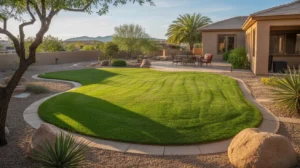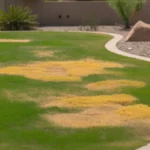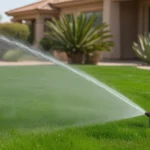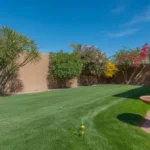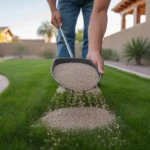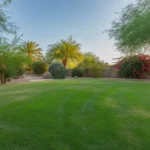Maintaining a lush, inviting lawn in Queen Creek doesn’t have to mean fighting against the desert climate. By choosing Arizona-friendly grass types and adopting smart lawn care practices, you can enjoy a thriving yard that’s both beautiful and water-wise. In this guide, we’ll explore the best grass options for Queen Creek and share expert tips for installation, care, and maintenance.
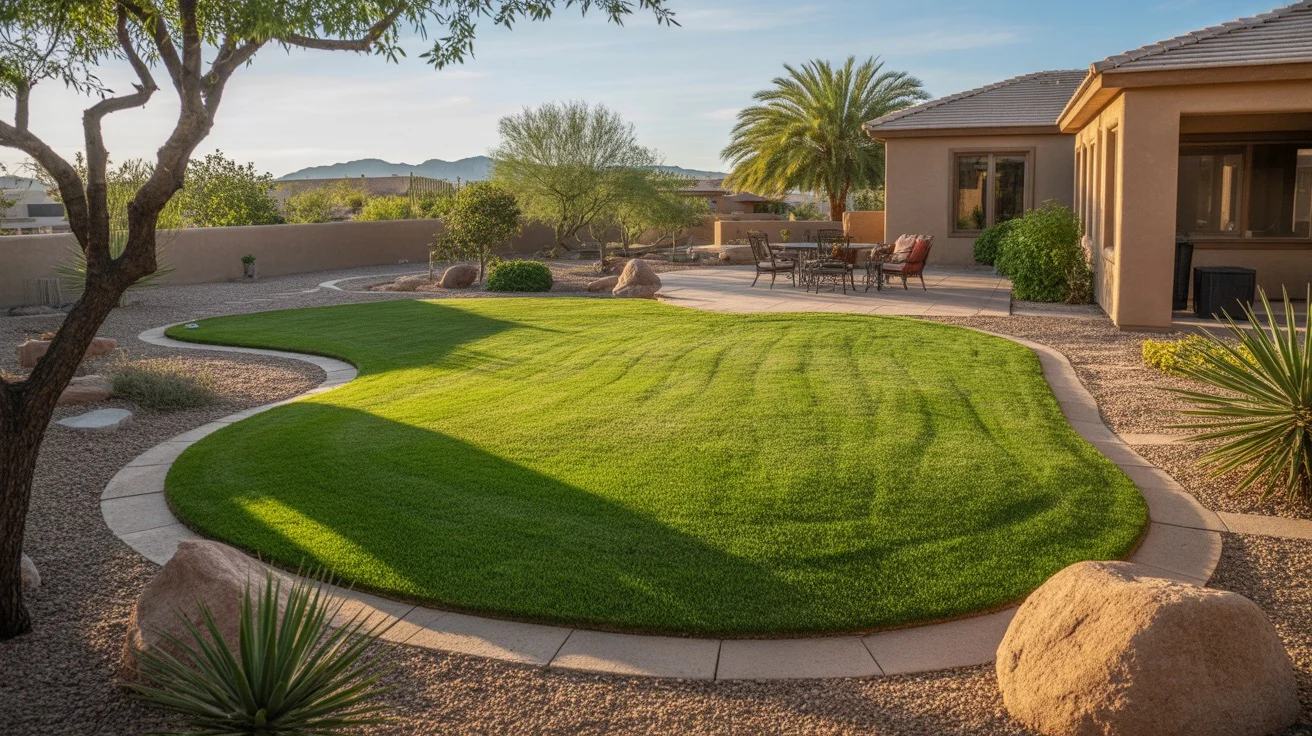
Understanding Arizona-Friendly Grasses
Arizona-friendly grasses are species that are well-adapted to the hot, dry conditions of the Sonoran Desert. These grasses require less water, tolerate high temperatures, and can withstand periods of drought. By selecting the right grass type for your Queen Creek lawn, you’ll save water, time, and money while still enjoying a lush, inviting outdoor space.
Some of the most popular Arizona-friendly grass options include:
- Bermuda grass
- Zoysia grass
- St. Augustine grass
- Buffalo grass
Each of these grasses has unique characteristics and benefits. Bermuda grass, for example, is known for its exceptional heat and drought tolerance, while zoysia grass forms a dense, weed-resistant turf. Consider factors like sun exposure, foot traffic, and your desired maintenance level when choosing the best grass for your Queen Creek yard.
Preparing Your Lawn for Arizona-Friendly Grass
Before installing your new Arizona-friendly grass, it’s essential to properly prepare your lawn area. Start by removing any existing grass, weeds, or debris. Till the soil to a depth of 6-8 inches to loosen compaction and improve drainage. If your soil is heavy clay or sandy, consider amending it with organic matter like compost to enhance its structure and water-holding capacity.
Next, grade the area to ensure proper drainage away from your home and other structures. A gentle slope of 1-2% is ideal for preventing water from pooling on your lawn. Finally, smooth the surface with a rake and water the area thoroughly to settle the soil before laying your new grass.
Installing Arizona-Friendly Grass
There are two main methods for installing Arizona-friendly grass in your Queen Creek lawn: sod and seed. Sod offers instant gratification, as you’ll have a lush, established lawn as soon as the installation is complete. However, it’s more expensive than seeding and requires more water initially to help the sod roots establish.
Seeding is a more budget-friendly option but requires patience as the grass takes time to germinate and fill in. Choose high-quality seed from a reputable supplier and follow the recommended seeding rates for your specific grass type. Keep the soil consistently moist until the grass seedlings are well-established, which can take several weeks.
Caring for Your Arizona-Friendly Lawn
Once your Arizona-friendly grass is established, proper care is key to maintaining a healthy, attractive lawn. Water deeply and infrequently to encourage deep root growth and drought tolerance. Most Arizona-friendly grasses require about 1 inch of water per week, including rainfall. Adjust your irrigation schedule based on the season and weather conditions to avoid overwatering.
Mow your lawn regularly to the recommended height for your grass type, typically 1-2 inches for Bermuda and zoysia grass and 2-3 inches for St. Augustine and buffalo grass. Avoid removing more than 1/3 of the grass blade height at once to minimize stress on the lawn. Leave grass clippings on the lawn to recycle nutrients back into the soil.
Fertilize your Arizona-friendly lawn 2-4 times per year, depending on the grass type and your desired level of growth and color. Use a slow-release, balanced fertilizer to provide a steady supply of nutrients without overwhelming the grass. Avoid fertilizing during the hottest months of summer when the grass is already stressed.
Overseeding for Year-Round Green
While Arizona-friendly grasses are well-adapted to the desert climate, some types like Bermuda grass may go dormant and turn brown during the cooler winter months. If you want to maintain a green lawn year-round, consider overseeding your warm-season grass with a cool-season variety like perennial ryegrass in the fall.
To overseed, start by mowing your lawn short and dethatching to remove excess debris. Spread the ryegrass seed evenly over the lawn and lightly rake it into the soil. Water the area regularly to keep the seed moist until it germinates and establishes. As temperatures warm up in the spring, the ryegrass will naturally die back, allowing your warm-season grass to take over again.
By selecting Arizona-friendly grasses and following these care and maintenance tips, you can enjoy a thriving, water-wise lawn in Queen Creek that’s the envy of the neighborhood. Embrace the beauty of the desert landscape while still having a lush, inviting outdoor space for you and your family to enjoy.

